Key Takeaways
- Cockroaches are indoor pests found in warm, dark areas like kitchens and bathrooms.
- Waterbugs live outdoors near water but can enter moist indoor areas occasionally.
- Cockroaches spread bacteria and cause allergies; waterbugs have minimal health risks but may bite.
- Prevent pests by sealing entry points and keeping food and moisture under control.
- Accurate pest identification helps ensure proper treatment—call professionals for persistent issues.
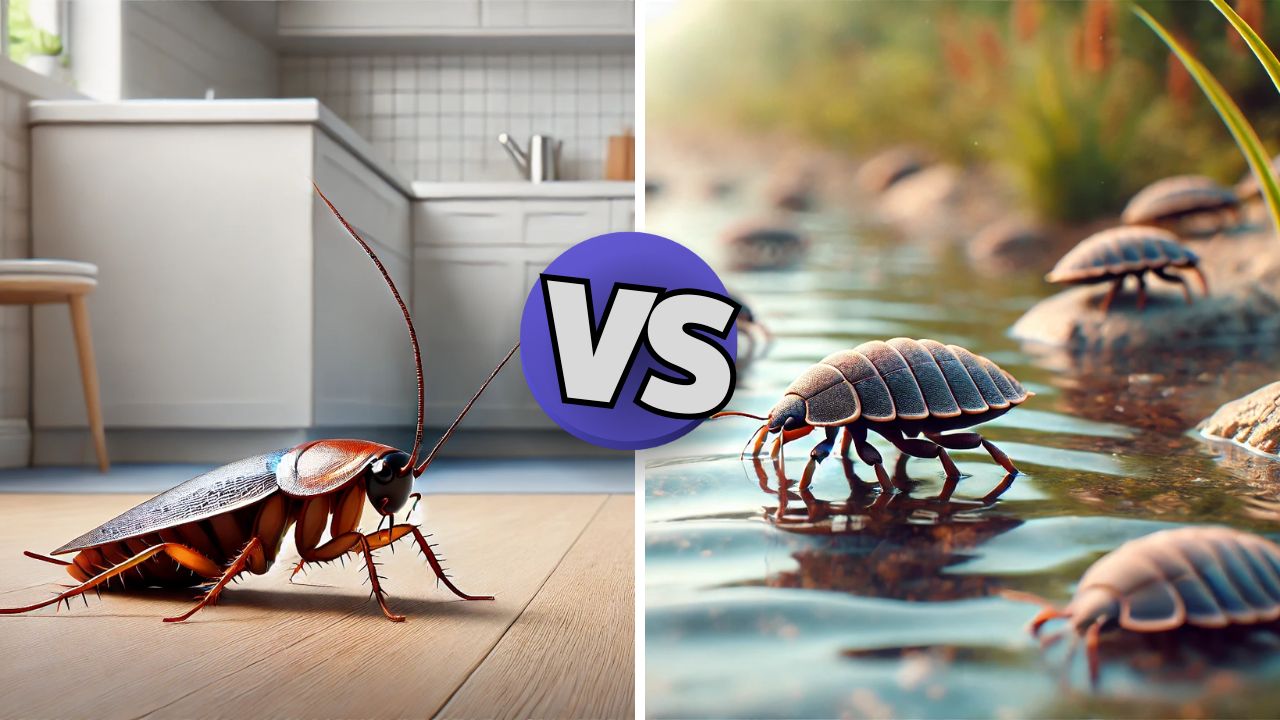 Cockroaches and waterbugs are often mistaken for each other due to their similar appearance, but these two pests have distinct behaviors, diets, and habitats. Cockroaches are resilient household pests that thrive indoors, while waterbugs are primarily outdoor insects found near water sources.
In this article, we’ll get to know their differences to help you manage infestations effectively and take the right preventive measures.
If you’re unsure which pest you’re dealing with, our pest control experts offer a free pest inspection to accurately identify and address your infestation. Schedule your free inspection today!
Cockroaches and waterbugs are often mistaken for each other due to their similar appearance, but these two pests have distinct behaviors, diets, and habitats. Cockroaches are resilient household pests that thrive indoors, while waterbugs are primarily outdoor insects found near water sources.
In this article, we’ll get to know their differences to help you manage infestations effectively and take the right preventive measures.
If you’re unsure which pest you’re dealing with, our pest control experts offer a free pest inspection to accurately identify and address your infestation. Schedule your free inspection today!
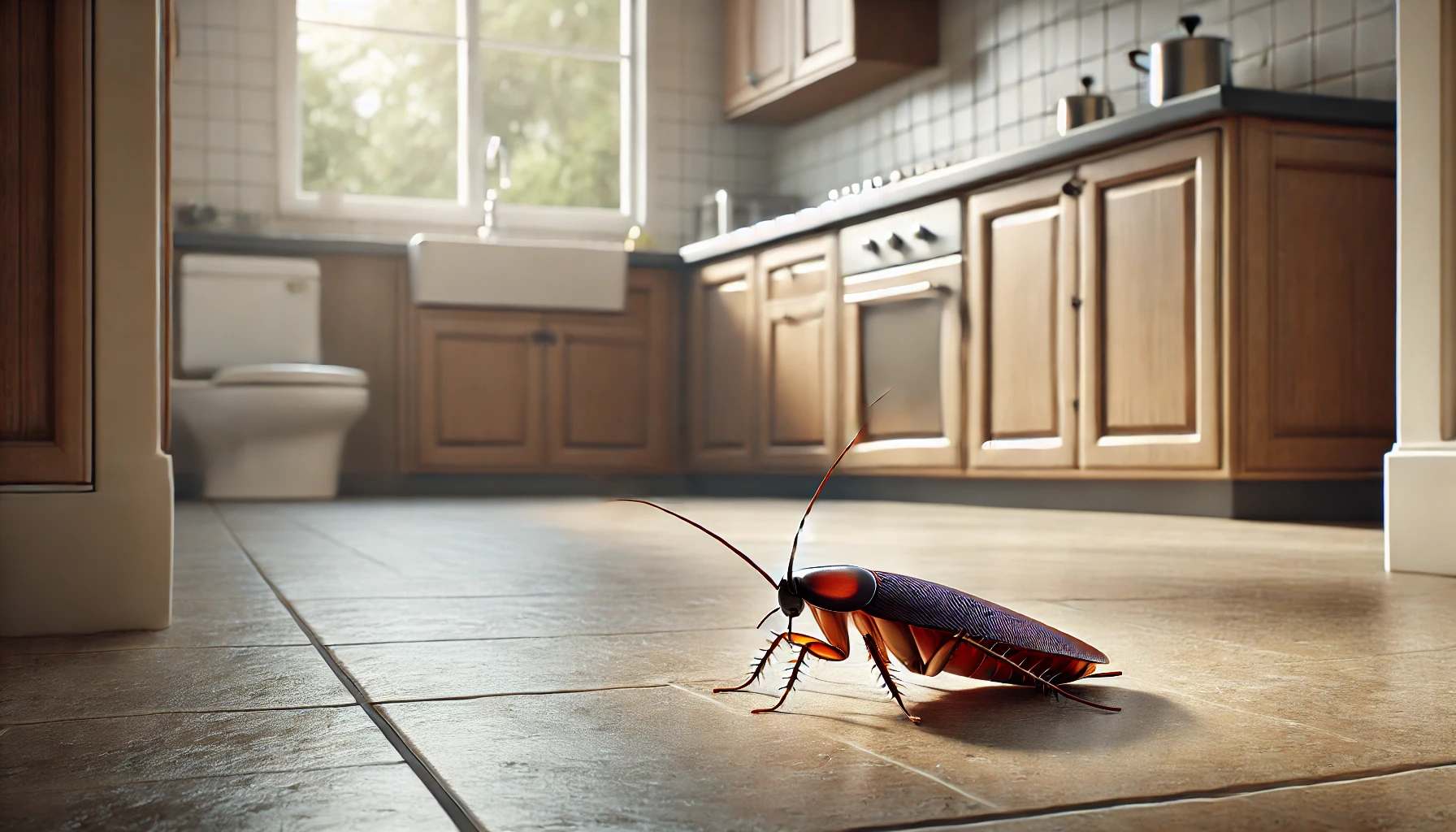

Not getting a solution?
Get your free pest control estimate today!What Are Cockroaches?
Cockroaches are among the most common household pests. They are highly adaptable, capable of surviving in various conditions, and are known for spreading bacteria and triggering allergies. Their presence indoors is often linked to unsanitary conditions or hidden food sources.Physical Characteristics of Cockroaches
-
Body Structure: Flattened, oval-shaped bodies with long, thread-like antennae.
-
Legs: Six long legs that enable them to move quickly.
-
Size: Typically between 1 to 4 inches long, depending on the species.
-
Wings: Some species have wings but are not strong fliers.
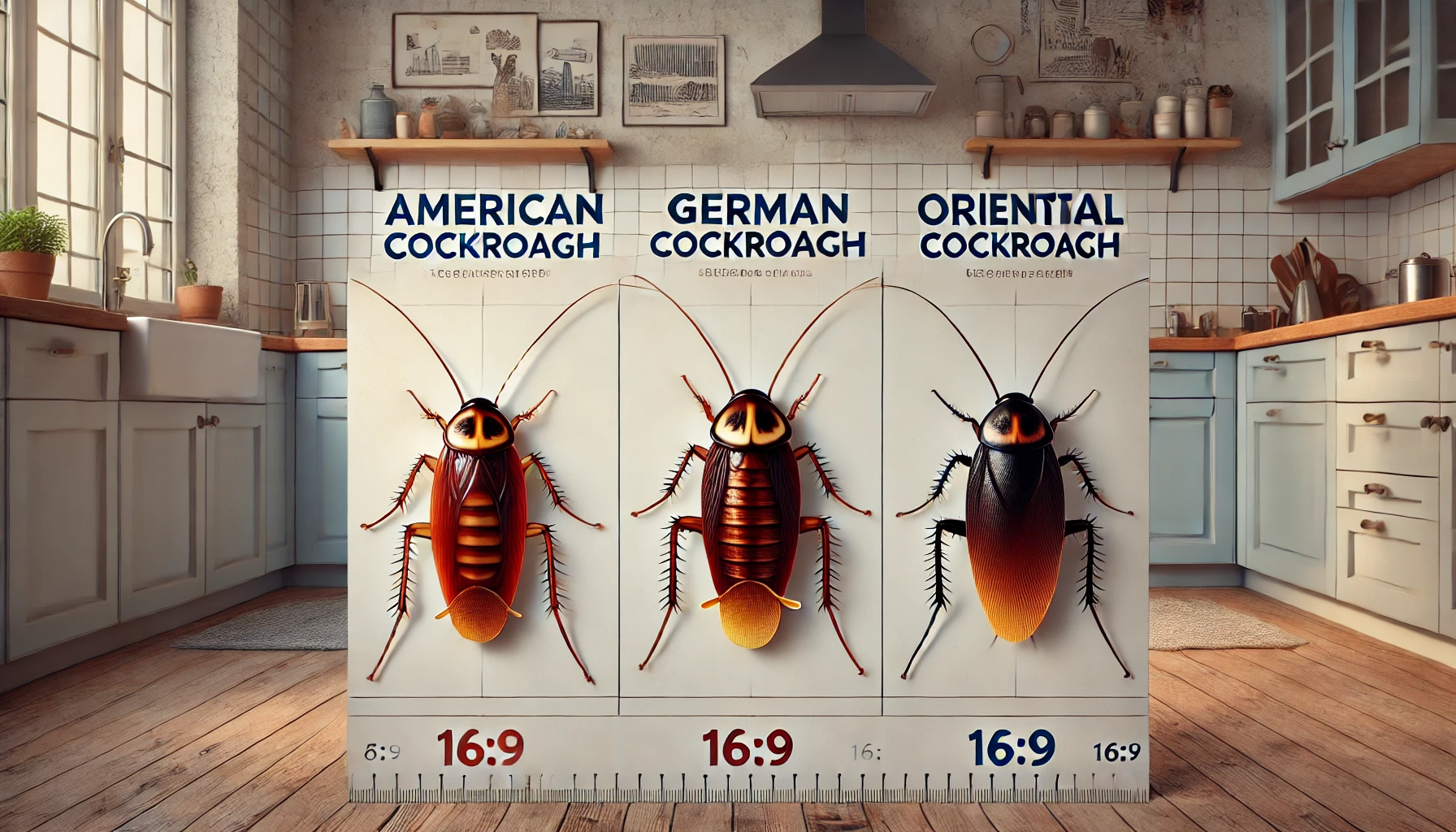
Common Species of Cockroaches
- Cockroaches are diverse insects with several species commonly found in households:
-
German Cockroach: Tan to brown, 1/2 to 5/8 inches long, with two dark stripes on their back. Common in indoor areas like kitchens and bathrooms.
-
American Cockroach: Large, reddish-brown, 1.5 to 2 inches long, with a yellow figure-eight marking behind the head. Found in sewers, basements, and commercial buildings.
-
Oriental Cockroach: Dark brown to black, about 1 inch long. Prefers cool, damp areas such as basements and drains.
-
Brown-banded Cockroach: Small and light brown with brown bands across wings. Found in warm, dry spots like furniture and electronics.
Habitats Preferred by Cockroaches
- Cockroaches thrive in environments providing easy access to food, moisture, and shelter:
-
Kitchens: Commonly hide behind appliances, under sinks, and near food storage areas.
-
Bathrooms: Attracted to moisture around drains, pipes, and fixtures.
-
Basements: Dark, humid spaces provide ideal hiding and breeding conditions.
-
Garages and Storage Spaces: Cluttered, undisturbed areas offer shelter and easy hiding spots.
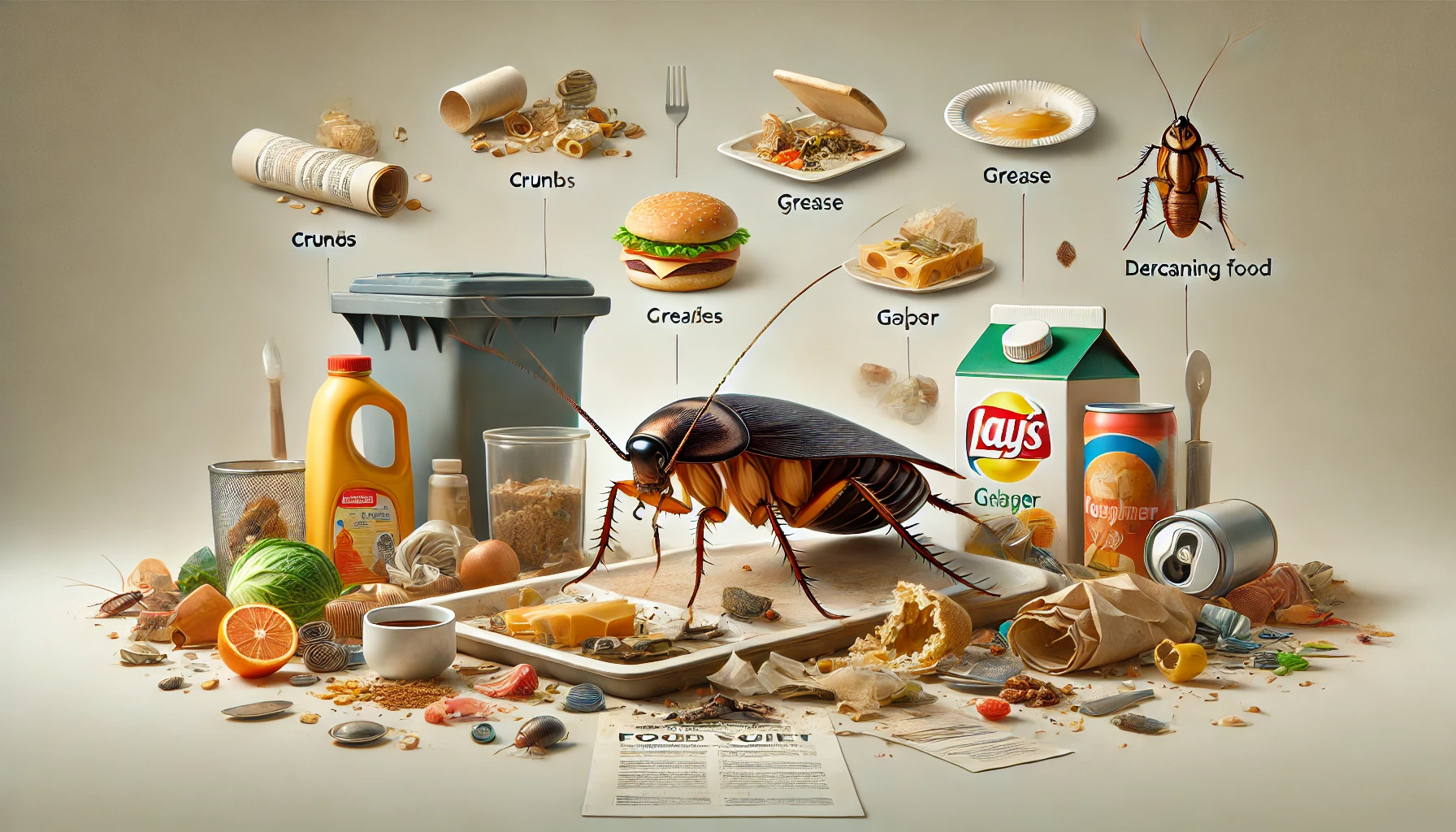 Dietary Habits of Cockroaches
Cockroaches are omnivorous scavengers and feed on nearly anything available:
Dietary Habits of Cockroaches
Cockroaches are omnivorous scavengers and feed on nearly anything available:
- Food scraps, leftovers, and crumbs.
- Grease and residue in kitchens.
- Paper products, glue, and even soap.
- Organic matter in garbage and compost.
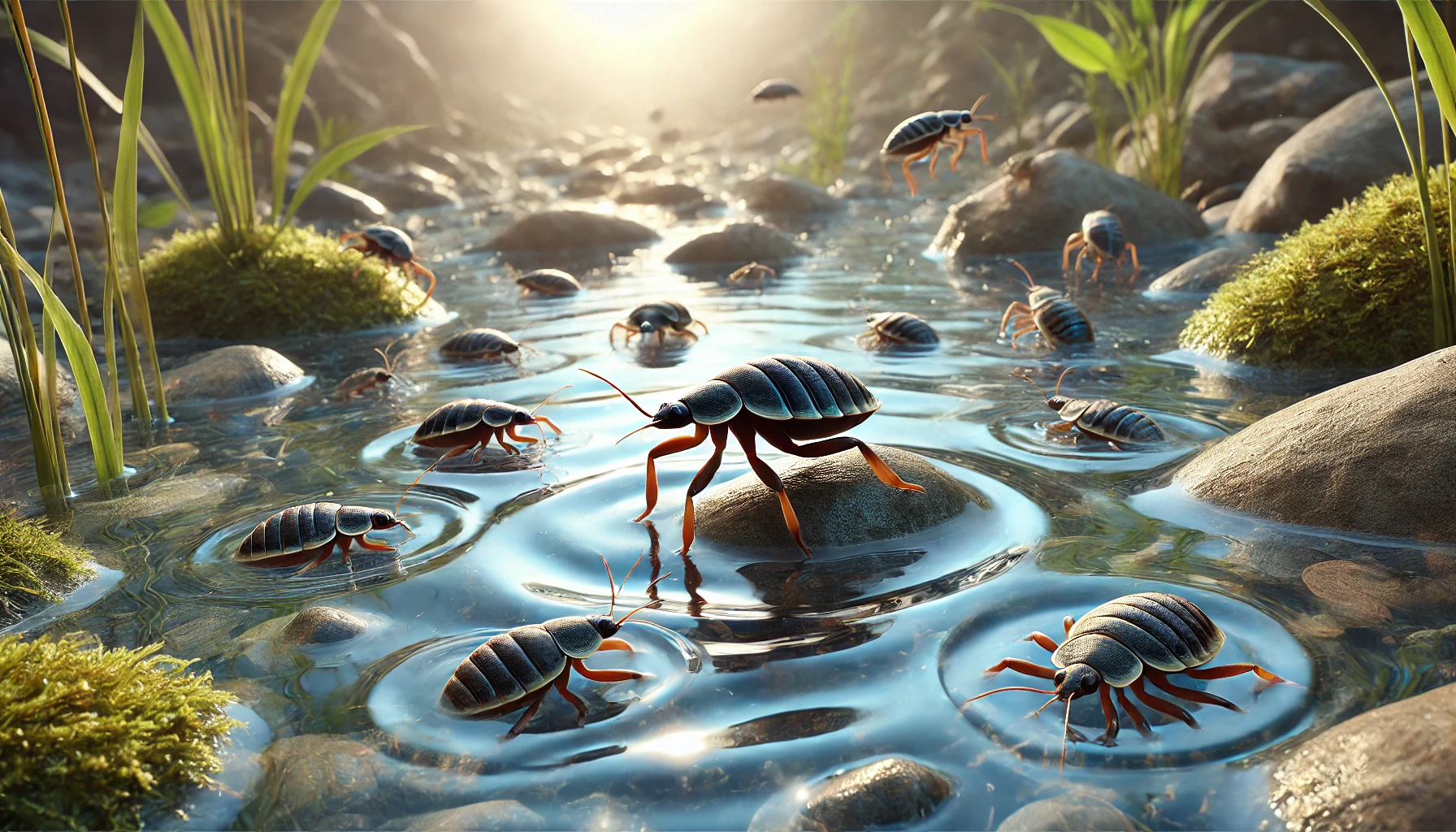
What Are Waterbugs?
Waterbugs, sometimes called “giant water bugs” or “toe-biters,” are larger aquatic insects that thrive in damp environments. Unlike cockroaches, waterbugs are predatory and feed on other insects and small aquatic creatures.Physical Characteristics of Waterbugs
-
Body Structure: More robust, oval-shaped bodies compared to cockroaches.
-
Legs: Strong, paddle-like legs that allow them to move swiftly in water.
-
Size: Typically range from 1.5 to 3 inches long.
-
Wings: Large, fully developed wings that enable them to fly.
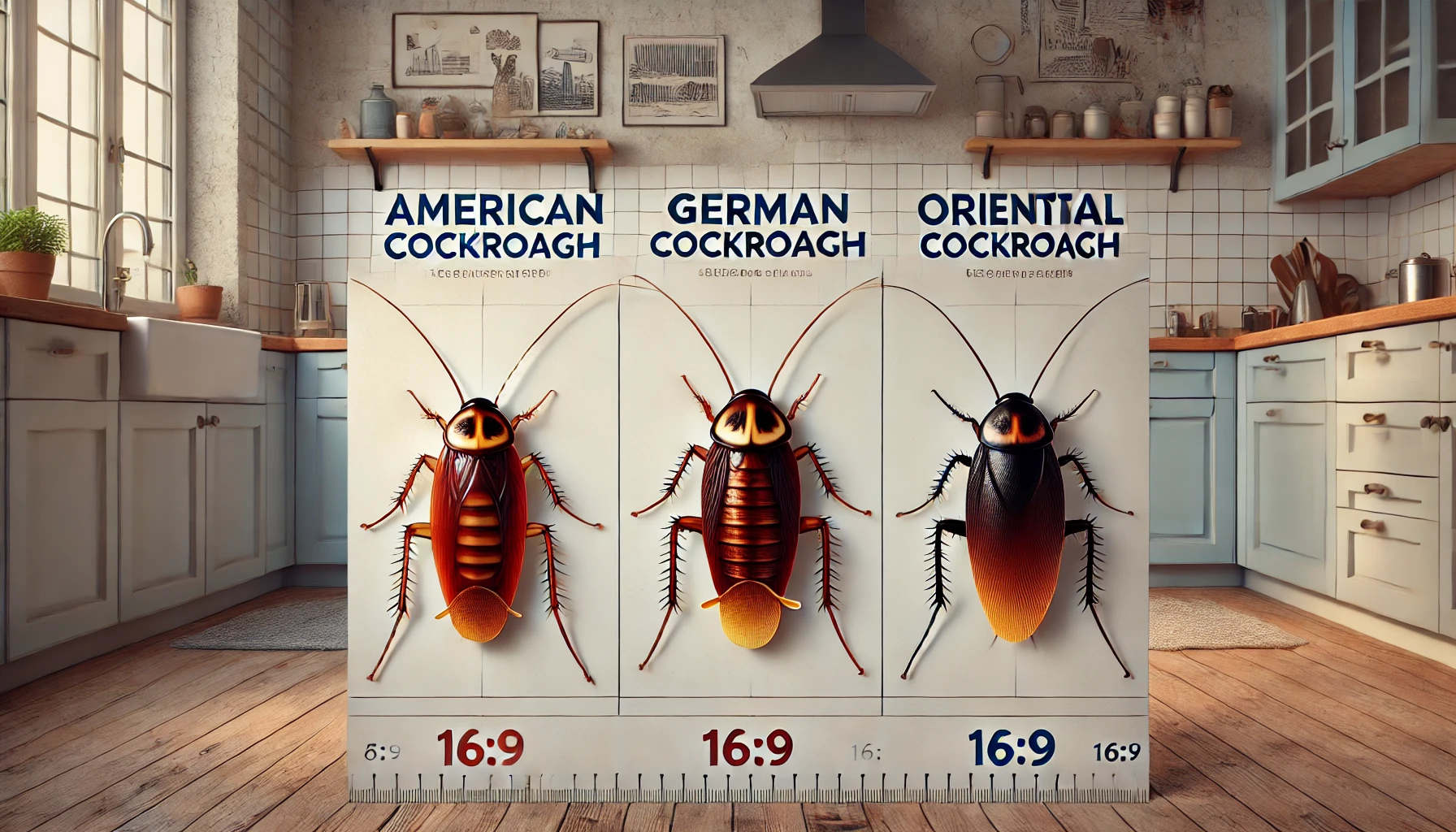
Common Species of Waterbugs
- Waterbugs generally refer to aquatic insects, with common species including:
-
Giant Water Bug: Large (2–4 inches), brown or black oval insects often found in freshwater ponds and streams.
-
Water Boatman: Smaller, oval-shaped aquatic bugs typically seen swimming in pools and lakes.
-
Backswimmers: Resemble Water Boatmen but swim upside-down beneath the water surface.
Habitats Preferred by Waterbugs
- Waterbugs prefer aquatic or very moist environments:
-
Freshwater Bodies: Ponds, lakes, and slow-moving rivers provide ideal aquatic habitats.
-
Pools and Fountains: Often found in stagnant or untreated water sources.
-
Wet Soil and Marshy Areas: Damp, marsh-like zones support breeding and feeding activities.
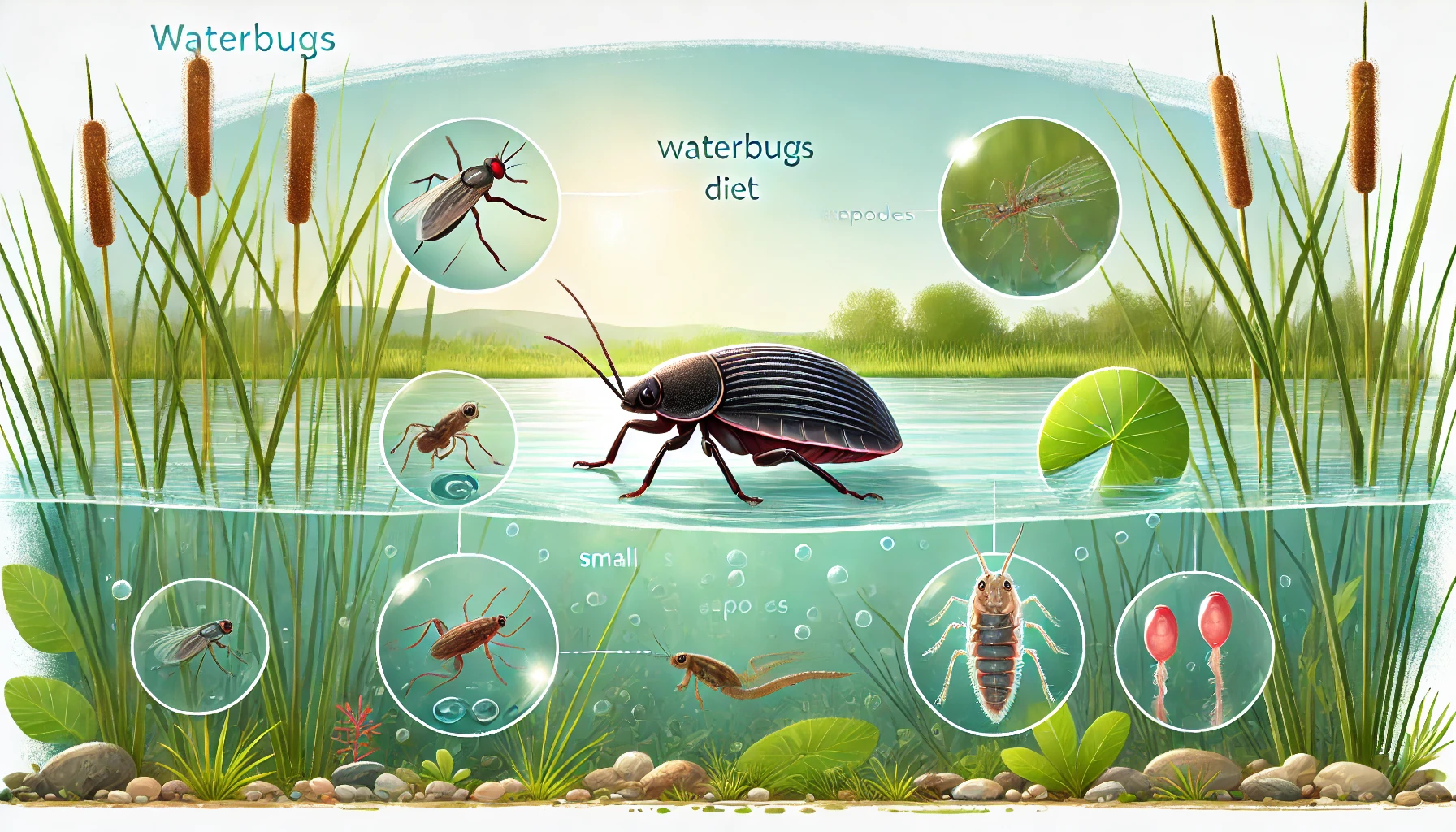
Dietary Habits of Waterbugs
- Waterbugs are primarily predators and hunters:
-
Giant Water Bugs: Prey on insects, small fish, amphibians, and occasionally small birds.
-
Water Boatmen and Backswimmers: Consume small aquatic organisms, including mosquito larvae and tiny crustaceans.
Key Differences Between Cockroaches and Waterbugs
| Feature | Cockroaches | Waterbugs |
|---|---|---|
| Body Structure | Flattened, oval-shaped bodies with long antennae | Robust, cylindrical bodies with powerful legs |
| Size | 1 to 4 inches | 1.5 to 3 inches |
| Legs | Six long, spindly legs for speed | Stronger, paddle-like legs for swimming |
| Wings | Some have wings but rarely fly | Larger wings, more capable of flying |
| Movement | Fast and skittish, dart away quickly | Slower on land, efficient swimmers in water |
| Habitat | Prefer warm, dark indoor spaces | Prefer moist, outdoor areas near water sources |
| Diet | Omnivorous, feeding on organic material | Carnivorous, preying on aquatic insects and small creatures |
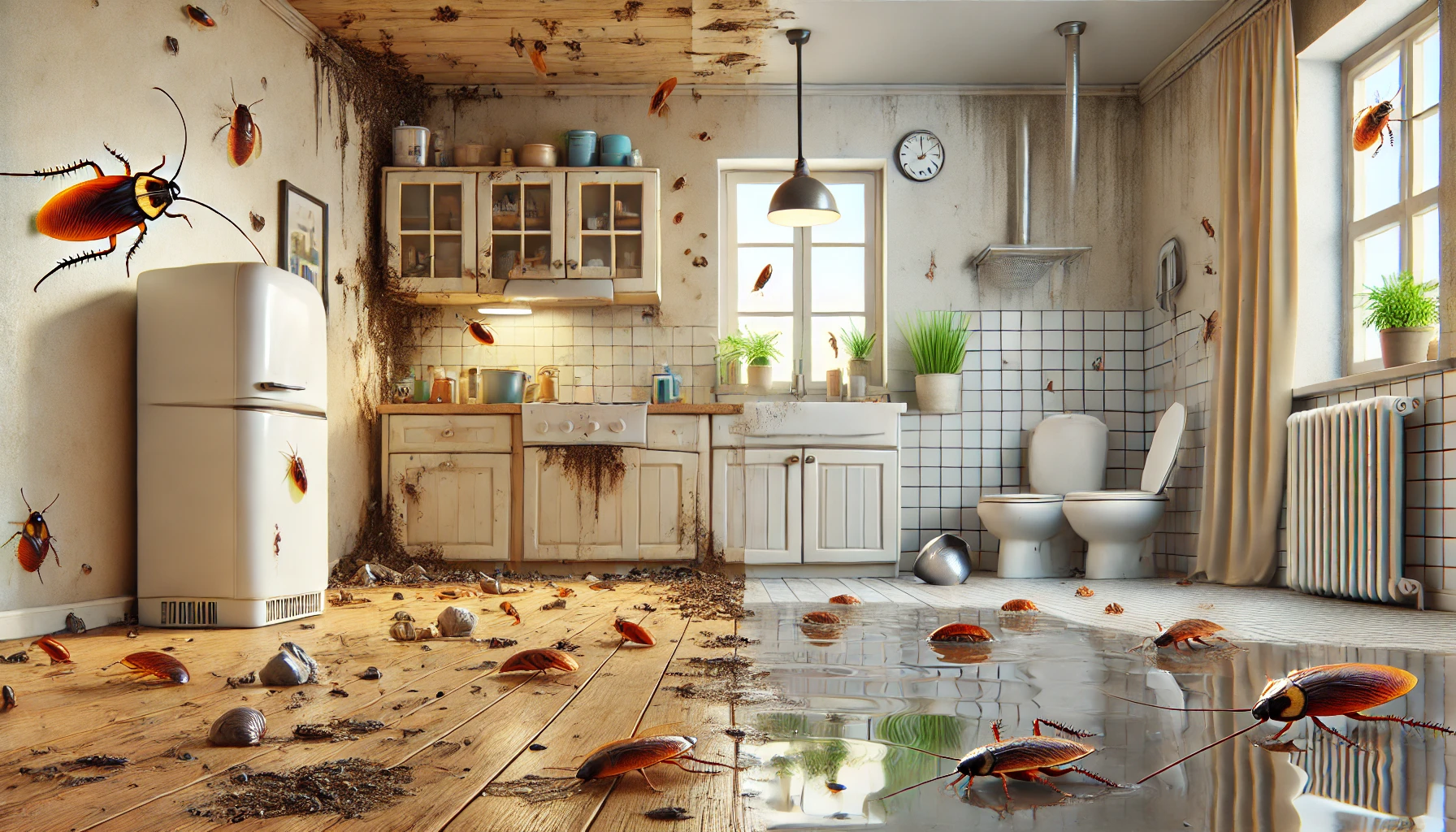
Signs of Infestation
Identifying a Cockroach Infestation
- Droppings that look like black pepper or coffee grounds
- Musty odor, especially in larger infestations
- Egg casings found in cracks, behind appliances, or furniture
- Sightings of live or dead cockroaches, mostly at night
Identifying a Waterbug Infestation
- Frequent sightings around pools, ponds, or water sources
- Dead waterbugs or shed skins found near damp areas
- Increased presence during warm weather months
Why It’s Important to Know the Difference?
Identifying whether you’re dealing with cockroaches or waterbugs is crucial for effective pest control. While they may look similar at first glance, their behaviors and threats to your home are significantly different.
Potential Risks of Cockroaches
- Think cockroaches are just unsightly? Unfortunately, they pose real health hazards too which adds their reproduction. Let’s dive into the risks these pests can bring to your home and family.
-
Disease Transmission: Cockroaches carry bacteria that can contaminate food and surfaces, causing food poisoning and other illnesses.
-
Allergic Reactions: Their droppings, shed skin, and saliva may trigger allergies and asthma attacks, especially in children.
-
Rapid Infestation: Cockroaches reproduce quickly, making infestations difficult to control once they spread.
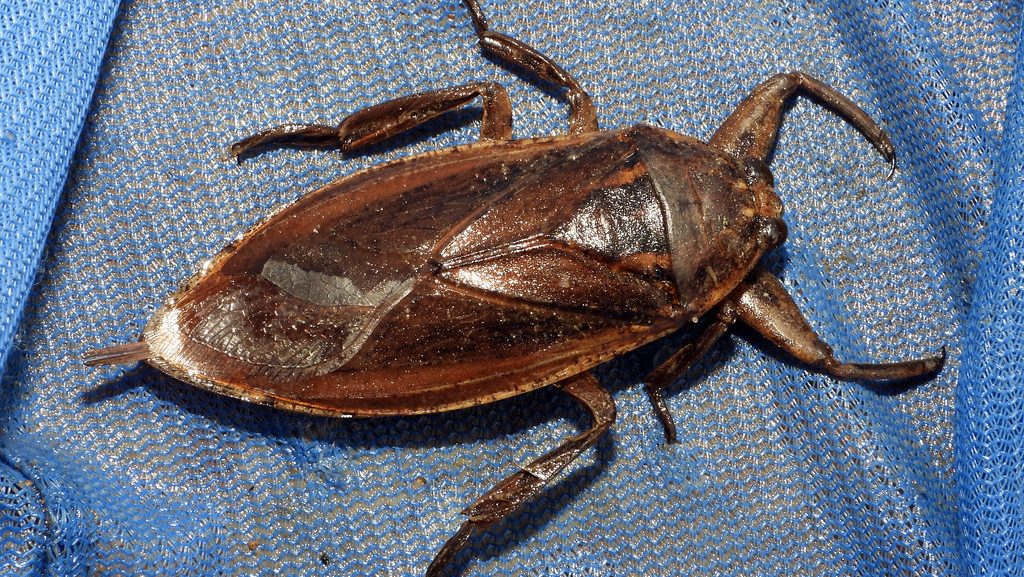
Potential Risks of Waterbugs
-
Bites: While rare, waterbugs can bite when threatened, causing mild pain and irritation.
-
Unpleasant Sightings: Their large size and presence in bathrooms or basements can be alarming.
-
Attracted to Moisture: Homes with plumbing leaks or standing water may experience waterbug invasions.
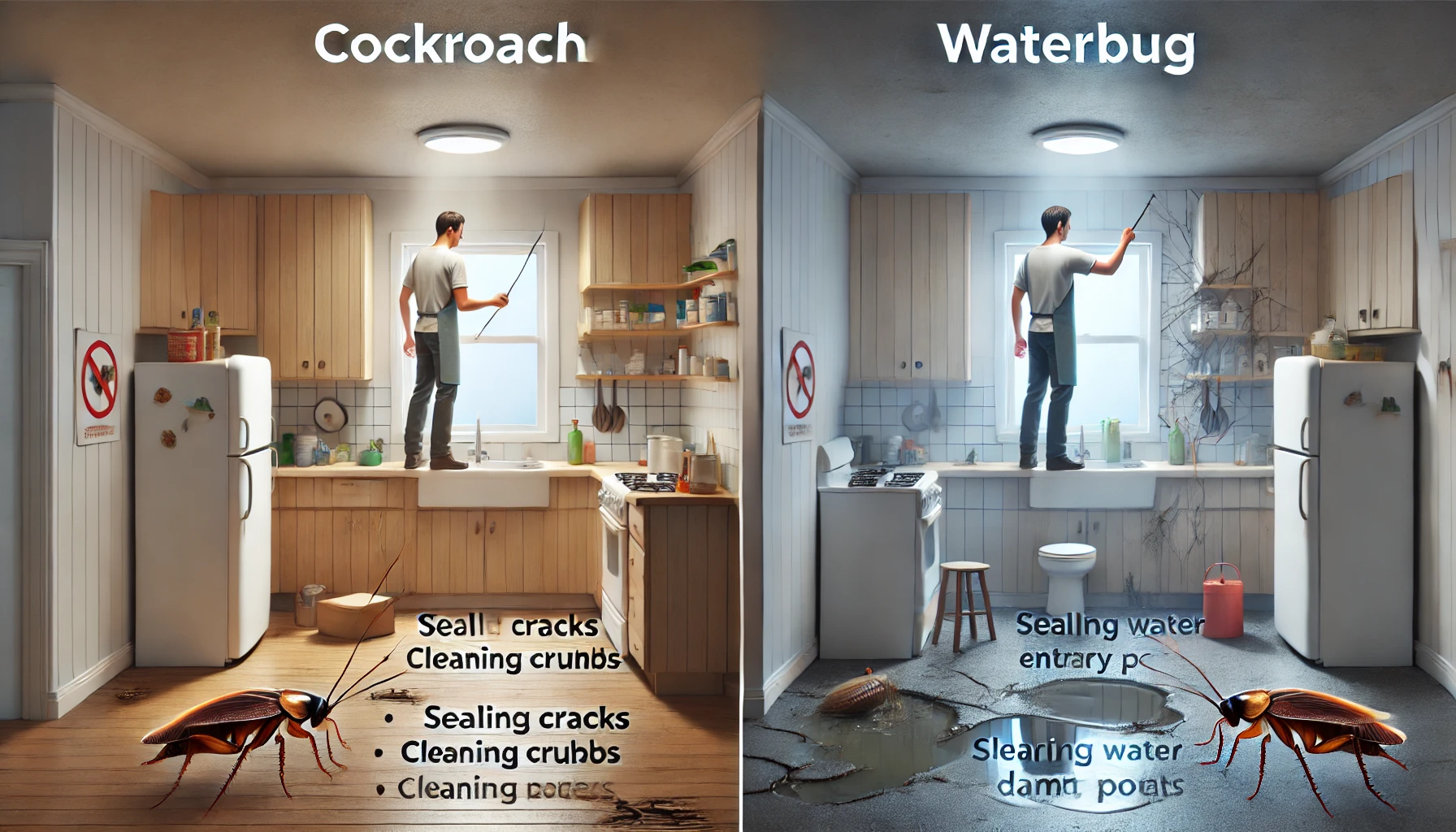
How to Prevent Cockroach and Waterbug Infestations
Cockroaches and waterbugs thrive in damp, cluttered environments, often entering homes in search of food, moisture, and shelter. Use these simple yet effective tips to keep these unwanted pests from invading your space:Tips for Preventing Cockroaches
-
Seal Entry Points: Close gaps around doors, windows, and pipes to prevent entry.
-
Eliminate Food Sources: Keep food in sealed boxes and clean up crumbs and spills immediately.
-
Reduce Moisture: Fix leaks and use dehumidifiers to minimize damp conditions.
Tips for Preventing Waterbugs
-
Eliminate Water Sources: Fix plumbing leaks and prevent standing water around your home.
-
Seal Entry Points: Close gaps around windows, doors, and drains where waterbugs might enter.
-
Outdoor Maintenance: Keep gutters clean, remove debris, and trim vegetation near water sources.

DIY Methods for Pest Control
-
To manage cockroaches and waterbugs effectively, there are many methods like baits and traps:
-
Cleanliness: Keep kitchen counters, floors, and drains free of food particles and grease to discourage cockroaches and waterbugs.
-
Sealing Entry Points: Use caulk to close cracks and gaps around walls, plumbing, and foundations to block pest entry.
-
Traps and Baits: Set up bait stations and sticky traps in high-traffic areas like behind appliances and under sinks.
-
Water Management: Maintain clean, treated pools and eliminate stagnant water to reduce waterbug attraction.
-
Natural Remedies: Apply diatomaceous earth or boric acid in pest-prone areas to naturally kill insects without harsh chemicals.
Myths and Facts About Cockroaches and Waterbugs
| Myth | Fact |
|---|---|
| Cockroaches and waterbugs are the same pest. | They are different species with distinct habits and appearances. |
| Waterbugs are harmful to humans. | Waterbugs are not typically harmful, though their bites can cause irritation. |
| Cockroaches only live in dirty environments. | Cockroaches are adaptable and can live in clean environments if they find food and water. |
| All cockroaches have wings. | Some cockroach species have reduced or no wings. |
| Waterbugs are just a type of cockroach. | Waterbugs are a different species with specific aquatic habits. |
When to Call a Pest Control Professional
- Infestations continue despite implementing DIY measures.
- Presence of cockroaches or waterbugs in multiple areas throughout the home.
- Evidence of significant pest populations, such as large amounts of droppings, damage, or visible nests.
- Increased sightings during daytime, indicating an extensive infestation.





